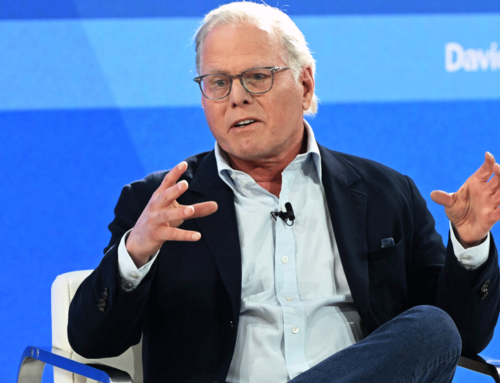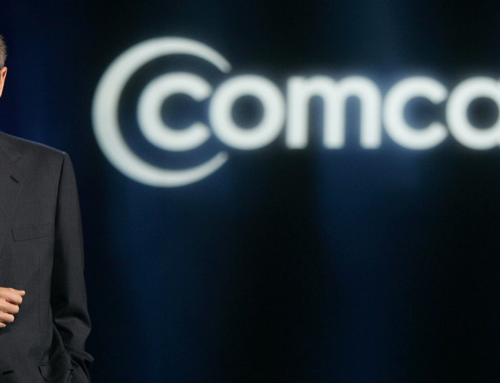The Exceptional Success of Christmas 2023 in Streaming Platforms
Winter holidays are over, and we can now analyze the data to evaluate what has worked for the streaming audiences and how Christmas Movies explain Hollywood History.
Starting from December 18th, the holiday film dominates during the Christmas week. This year, the ratings for Christmas movies have experienced an increase compared to previous years, going from 269.8 million in 2022 to 314 million in 2023. As more people use streaming services, Christmas films are particularly benefiting from this trend.
The shift from traditional, scheduled TV viewing (linear viewing), exemplified by events like Freeform’s “21 Days of Christmas,” to on-demand streaming platforms, allows viewers to choose when and what they watch from “Holiday collections” offered by various streaming services.
The ratings for certain Christmas movies, specifically “Elf” and “Christmas Vacation,” have increased. This rise is attributed to their availability on streaming platforms like Hulu and HBO Max.
Streaming services play an essential role in enhancing the popularity and viewership of Christmas films, challenging the traditional dominance of linear TV viewing.
2023 saw fewer first-run holiday movies compared to 2022. Despite the overall decrease in the number of new Christmas films, “Candy Cane Lane” performed exceptionally well, achieving the second-highest ranking among all Christmas movies released directly to streaming platforms since 2020.
Christmas is also about rewatching the classics “Home Alone”, “Elf” and “National Lampoon’s Christmas Vacation,” experienced a notable increase in viewership. However, the 2000 version of “How the Grinch Stole Christmas” had a relatively subdued presence on streaming platforms, primarily because it was only made available on Peacock shortly before Christmas. Had it been accessible on the streaming service throughout the entire month of December, its viewership in 2023 would probably have been significantly higher.
What are the trends and strategic changes in the distribution of Christmas movies in 2023?
Non-exclusivity has become a strategic change: films are made available on multiple platforms rather than being exclusive to one.
Potential Benefits of Licensing for Netflix: Netflix Christmas movies might actually gain more public awareness if they were available on linear channels or other streaming services. The idea is that platforms like TNT or Freeform could give these films more exposure and possibly a “second life”.
Before the advent of the “theatrical” window, theaters were the primary venue for film screenings. Hollywood began producing Christmas-themed films, with Bing Crosby popularizing classics like Holiday Inn and White Christmas. Miracle on 34th Street contributed to the Santa Claus mythos. Frank Capra’s It’s a Wonderful Life created the Christmas-adjacent film genre without Santa Claus, HBO Max boasts an extensive collection of these classic films. During this era, these movies primarily targeted adults, delving into Christmas themes without being children’s films. The star-studded cast included renowned actors like Jimmy Stewart, Cary Grant, and Bing Crosby.
The period from 1988 to 2003 is often considered the golden age for Christmas films, with increased production, diverse genres, and a highly profitable DVD market contributing to its success. This era saw a diverse range of Christmas films, including romantic comedies like “Love Actually,” comedies like “Christmas Vacation” and “Elf,” and family films that weren’t animated, such as “Home Alone.” These genres have become less common in recent years due to the dominance of blockbuster movies.
The late 2000s to mid-2010s saw the cable television boom and a significant shift in TV consumption. The advantage of cable was its ability to offer a vast number of channels, numbering in the hundreds. Initially, this surge in channels did not greatly impact Christmas films. Hallmark Channel and Lifetime embraced the holiday season by producing a plethora of what can be described as cheesy Christmas movies. Common themes included royalty or small-town settings. Despite their predictability, these films garnered high ratings and attracted a substantial viewership. To accommodate their budgets, Hallmark and Lifetime films were typically produced at the lowest levels of expenditure, with each film costing around $1.5-2.5 million and being shot in just three weeks. This cost-effectiveness allowed these channels to produce multiple Christmas movies each year compared to the budget of a single episode of a high-profile series like “The Mandalorian.” Cable channels like Freeform (formerly ABC Family) and AMC started airing popular Christmas films like “Elf,” “Scrooged,” and “The Santa Clause” continuously during December. This strategy mirrored the round-the-clock airings of “It’s a Wonderful Life,” which helped cement these films as staples of the Christmas season, creating a lasting impact on holiday traditions and viewing habits.
From 2010s to nowadays, streaming platforms have revolutionized the Christmas film landscape, offering both original content and classics. Christmas is a crucial time for these services to attract new subscribers before the year ends. Additionally, as customers acquire new devices, streaming platforms aim to provide appealing programming to draw them in. Netflix is investing billions in original content, and Disney, Amazon, and Apple are planning to match these investments.
Sources:
https://www.thewrap.com/leave-the-world-behind-netflix-most-popular-films-list/
Share:
Winter holidays are over, and we can now analyze the data to evaluate what has worked for the streaming audiences and how Christmas Movies explain Hollywood History.
Starting from December 18th, the holiday film dominates during the Christmas week. This year, the ratings for Christmas movies have experienced an increase compared to previous years, going from 269.8 million in 2022 to 314 million in 2023. As more people use streaming services, Christmas films are particularly benefiting from this trend.
The shift from traditional, scheduled TV viewing (linear viewing), exemplified by events like Freeform’s “21 Days of Christmas,” to on-demand streaming platforms, allows viewers to choose when and what they watch from “Holiday collections” offered by various streaming services.
The ratings for certain Christmas movies, specifically “Elf” and “Christmas Vacation,” have increased. This rise is attributed to their availability on streaming platforms like Hulu and HBO Max.
Streaming services play an essential role in enhancing the popularity and viewership of Christmas films, challenging the traditional dominance of linear TV viewing.
2023 saw fewer first-run holiday movies compared to 2022. Despite the overall decrease in the number of new Christmas films, “Candy Cane Lane” performed exceptionally well, achieving the second-highest ranking among all Christmas movies released directly to streaming platforms since 2020.
Christmas is also about rewatching the classics “Home Alone”, “Elf” and “National Lampoon’s Christmas Vacation,” experienced a notable increase in viewership. However, the 2000 version of “How the Grinch Stole Christmas” had a relatively subdued presence on streaming platforms, primarily because it was only made available on Peacock shortly before Christmas. Had it been accessible on the streaming service throughout the entire month of December, its viewership in 2023 would probably have been significantly higher.
What are the trends and strategic changes in the distribution of Christmas movies in 2023?
Non-exclusivity has become a strategic change: films are made available on multiple platforms rather than being exclusive to one.
Potential Benefits of Licensing for Netflix: Netflix Christmas movies might actually gain more public awareness if they were available on linear channels or other streaming services. The idea is that platforms like TNT or Freeform could give these films more exposure and possibly a “second life”.
Before the advent of the “theatrical” window, theaters were the primary venue for film screenings. Hollywood began producing Christmas-themed films, with Bing Crosby popularizing classics like Holiday Inn and White Christmas. Miracle on 34th Street contributed to the Santa Claus mythos. Frank Capra’s It’s a Wonderful Life created the Christmas-adjacent film genre without Santa Claus, HBO Max boasts an extensive collection of these classic films. During this era, these movies primarily targeted adults, delving into Christmas themes without being children’s films. The star-studded cast included renowned actors like Jimmy Stewart, Cary Grant, and Bing Crosby.
The period from 1988 to 2003 is often considered the golden age for Christmas films, with increased production, diverse genres, and a highly profitable DVD market contributing to its success. This era saw a diverse range of Christmas films, including romantic comedies like “Love Actually,” comedies like “Christmas Vacation” and “Elf,” and family films that weren’t animated, such as “Home Alone.” These genres have become less common in recent years due to the dominance of blockbuster movies.
The late 2000s to mid-2010s saw the cable television boom and a significant shift in TV consumption. The advantage of cable was its ability to offer a vast number of channels, numbering in the hundreds. Initially, this surge in channels did not greatly impact Christmas films. Hallmark Channel and Lifetime embraced the holiday season by producing a plethora of what can be described as cheesy Christmas movies. Common themes included royalty or small-town settings. Despite their predictability, these films garnered high ratings and attracted a substantial viewership. To accommodate their budgets, Hallmark and Lifetime films were typically produced at the lowest levels of expenditure, with each film costing around $1.5-2.5 million and being shot in just three weeks. This cost-effectiveness allowed these channels to produce multiple Christmas movies each year compared to the budget of a single episode of a high-profile series like “The Mandalorian.” Cable channels like Freeform (formerly ABC Family) and AMC started airing popular Christmas films like “Elf,” “Scrooged,” and “The Santa Clause” continuously during December. This strategy mirrored the round-the-clock airings of “It’s a Wonderful Life,” which helped cement these films as staples of the Christmas season, creating a lasting impact on holiday traditions and viewing habits.
From 2010s to nowadays, streaming platforms have revolutionized the Christmas film landscape, offering both original content and classics. Christmas is a crucial time for these services to attract new subscribers before the year ends. Additionally, as customers acquire new devices, streaming platforms aim to provide appealing programming to draw them in. Netflix is investing billions in original content, and Disney, Amazon, and Apple are planning to match these investments.
Sources:
https://www.thewrap.com/leave-the-world-behind-netflix-most-popular-films-list/











